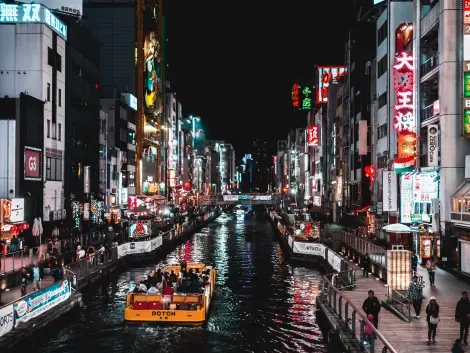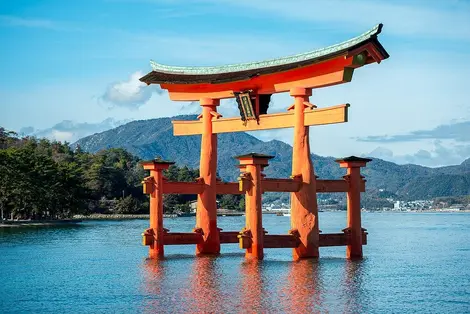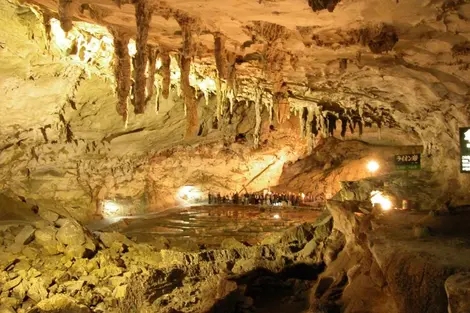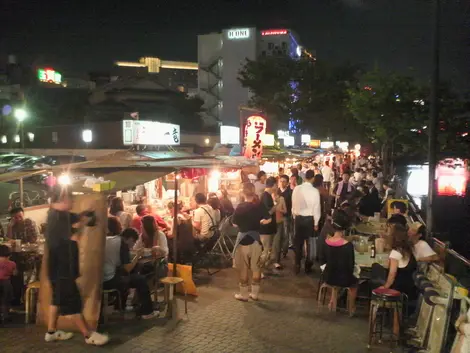JR WEST ALL AREA Pass

Trenes en los que se puede viajar con el JR West All Area Pass
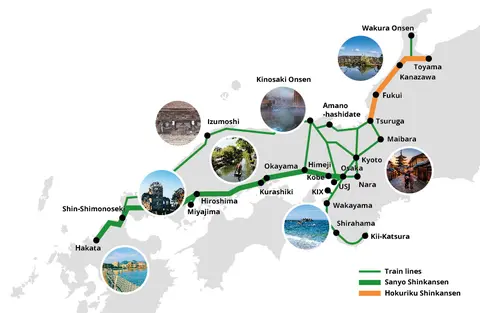
Highlights of the JR WEST ALL AREA Pass
How to use the JR WEST ALL AREA Pass
Delivery
- Once the pass is purchased, you will receive an e-voucher within 5 business days to your email address.
- The e-voucher must be exchanged within 90 days of reception. Please check the expiration date on your voucher.
Exchange
The e-voucher must be presented at an authorized exchange location for the physical pass. You must present your passport at the time of exchange. While exchanging the voucher, you will be asked to choose the pass activation date, it can be any date from the exchange date to up to 30 days in the future.
The e-voucher can be exchanged at the following locations:
Validity
The JR West All Area Pass is valid for 7 days and allows unlimited rides on a majority of JR-operated train facilities throughout the area. The Sanyo Shinkansen bullet train and Hokuriku Shinkansen bullet train can be ridden with this pass between select destinations.
The following train lines are accessible with the JR West All Area Pass:
Cancellation and Modification
- Cancellation and refund is possible if the voucher is unused and the cancellation is requested to Japan Experience within 80 days of the voucher issue date.
- The issued date is printed on your voucher.
- A 15% cancellation fee will be withheld from your refund.
- We will refund you within 3 weeks of your cancellation request.
Eligibility
Visitors traveling as tourists who have a temporary visitor entry status are eligible for this pass. Japanese passport holders are not eligible for this pass.
See the best of Japan all with one pass!
It can be hard to define what characterizes West Japan, largely because it encompasses almost every aspect of Japanese culture. From the sea to the mountains, endless adventures await. Rich nature to bustling cities and contemporary landmarks to centuries-old structures. 7 days worth of travel gives ample time for pass holders to immerse themselves in the charm of every region.
The Hokuriku Region
The prefectures of Toyama, Ishikawa, and Fukui in Hokuriku take great pride in the blessings of the Japan Sea. Commanding waters on one side offer an abundance of resources, including seafood that is known across the world. The peaks of the Japanese Alps, on the other hand, graze the sky above and support an environment that is completely different from that of the deep water. The prefectures' towns and cities are home to a flourishing arts and crafts culture that is rooted in both history and unrestricted expression through the use of materials like glass and ceramics.
The Kansai Region
The Kansai area has a history and heritage unlike any other, having been at the epicenter of Japan's political and cultural life for over a millennium thanks to the presence of the historic imperial capitals of Kyoto and Nara. Visitors to this diverse region can experience the urban thrill of places like Osaka and Kobe as well as the discovery of numerous World Heritage Sites.
Kyoto, located in the Kansai area, is well-known for its assortment of Buddhist temples, Shinto shrines, gardens, royal palaces, and traditional tea shops. With about 2.7 million residents, Osaka is the third-largest city in Japan, behind Tokyo and Yokohama. It is renowned for both its modern culinary culture and its thriving nightlife. A multicultural port city tucked away between the sea and the mountains, Kobe is well-known for its Chinatown area, sake breweries, and its well-known wagyu, Kobe Beef.
Hiroshima and Chugoku
The city of Hiroshima was rebuilt with grace and determination following the devastating atomic bombing in 1945. To learn about the significance of this occasion and the city's commitment to fostering peace, visit the Peace Memorial Park and Peace Memorial Museum. Admire Itsukushima Shrine's magnificent red torii gate, which seems to float during high tide. Coming from Osaka, it's obligatory to try Hiroshima-style okonomiyaki, differing from its Osaka counterpart with a more layered construction. Deviate a bit from Hiroshima and head to Izumo City in Shimane, home to one of the most prominent Shinto shrines in all of Japan: Izumo-taisha.
Yamaguchi and Fukuoka
The prefectures of Yamaguchi and Fukuoka meet at the junction of Honshu and Kyushu. Yamaguchi is often cited as "the Kyoto of the West," home to many historic shrines and temples. Also notable in Yamaguchi is the prominence of natural landmarks and the collection of caves, such as Akiyoshido that goes 100m underground.
Fukuoka's Hakata area is also notable for its religious sites, with some of the most prominent shrines in all of Japan calling this district home. Also famous in Fukuoka is its food culture, with its open-air "yatai" food stalls and world-famous Hakata tonkotsu ramen.
FAQ










